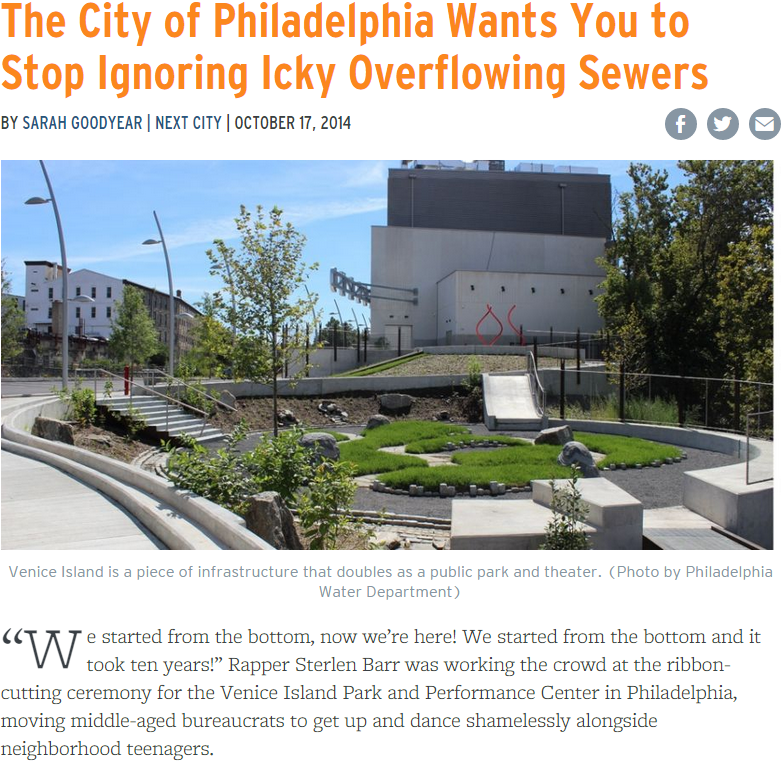Venice Island, in Philadelphia, was recently opened to the public after a $46 million makeover, part of the city’s $2.5-billion plan to become a national role model for green water infrastructure. The island hosts a cultural complex of parks, theaters, gardens, and a recreation center. It was a makeover that was worth the ten-year wait.
However, what makes Venice Island so special isn’t what if offers but what’s under it. A four million-gallon sewage overflow tank provides relief for the city’s old combined sewer network. Developers basically killed two birds with one stone. They not only reinforced the city’s sewers but also revived a deteriorating recreation center.

Pioneered by European cities in the 1840s, combined sewer overflows (CSOs) contained both storm water runoff and domestic sewage. Philadelphia was born a little later, so it should be no surprise that most of the city still clings to the old system. Unfortunately, CSOs can only hold so much contaminated water.
Schuylkill is a name synonymous with flood in the city, especially come hurricane season. When torrential rains hammered Philadelphia in May 2014, it didn’t take long for the river to overflow and flood the riverbank streets. In fact, during this time, Schuylkill rose to a little over 20 meters; during Hurricane Irene three years ago, the peak was at 19.76 meters.
To support the new sewage system, rain gardens were also built. These are designed to take in as much runoff as possible to reduce the strain on the already-overburdened sewage system. Plants like arrow-wood, bald cypress, and blue flag iris—native to the mid-Atlantic—are suitable for rain gardens since they can hold the most amount of water for the longest time.
More = Better?
When it comes to effective storm water management, every bit of useful technology helps. As StormChamber rain barrels work their magic underground, surface solutions such as rain gardens can also do their part. With storm water management solutions placed strategically, commercial establishments and public spaces can go a long way toward mitigating flood risks.
Rain barrels are also great for the retention and distribution of potable water. Consequently, businesses equipped with storm water management solutions that filter the runoff and render it fit for reusing can also save on their water bills. Finally, people appreciate a business that is committed to caring for the environment by following stormwater best management practices.
(Source: “The City of Philadelphia Wants You to Stop Ignoring Icky Overflowing Sewers,” Next City, October 17, 2014)





